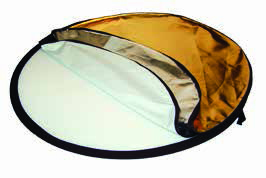5 Tips for Consistently Good Indoor Photos
No matter what level photography experience you have we all know that creating indoor photos can be a little tricky. Below are a few tips on how to avoid some of the pitfalls.
Color Balance/White Balance your Indoor Photos
Taking photos inside is one place that gives automatic settings on your camera an operating issue. Especially relevant to better indoor photos is learning how to set your camera’s white balance. If you are shooting available light and the light source is an Incandescent bulb, (3200˚K), Fluorescent tube (4500˚K), natural light through the window (5000˚-6500˚K) or an electronic flash (5500˚). Consider purchasing a white balance aid such as a Promaster White Balance Lens Cap.
Watch out for parallel and perpendiculars
Ordinarily this would be great advice if we were discussing composition; however, your camera’s pop-up flash can be hurting your photos cause it harshly pours light directly onto you subject. You need to have more options available for you to redirect light or to add an external flash (like a Speedlight) using the hot shoe so you can bounce light off walls and ceilings and/or use a Promaster ReflectorDisc to redirect light to your subject.Theoretically it is best to have your external flash in an “off-camera” position to create directional light to flatter your subject.
Make the eyes come to life
Flashes, reflectors and directional ambient light create reflections in the eyes referred to as a catch-light. Catch-Lights actually add life to the eyes. Sometimes it can be a little tricky to produce catch lights inside. I produce them indoors using a RelflectorDisc and/or a white wall. You can get creative with reflector sources, in a pinch I use white foam core, and cover it with tin foil if I wanted the effect of a silver reflector.
Location, Location, Location
Most relevant, light is your friend, and as photographers we paint with light, so it is imperative that you find great locations in your home where you know you will be able to get consistently good light for indoor photos. If you have a room with a lot of windows that faces north you are in really great shape. Great locations tend to be in living rooms, dens, even your kitchen. Try to avoid small dark areas as they tend not to be camera friendly.
Be wary of Higher ISOs
The camera manufacturers have greatly improved on image sensor quality; its awesome that we can take photographs is low light using higher ISOs. Digital noise is similar to grain in film, the higher the ISO the more noticeable the grain. Therefore my preference is not to shoot above an ISO of 800 when people are the subject. I really don’t care what the camera manufacturer’s say, unless you have a full frame professional model camera, there is noticeable camera noise (grain) above 800 ISO, especially in low light situations.
Now you may like a little grain for texture, in which case don’t change a thing. My only advice is that you become seriously familiar with your white balance and color temperatures.
If you like to take photos inside, try becoming more familiar with your on-camera and your external flashes. Experiment, practice and learn how to mix natural and man-made light. If you’re a beginner, you may find this a little intimidating, don’t; find a friend or family member and just practice. If you need assistance getting started you can sign up for a private class at Larmon University or call (215) 887-1248 and ask for Jeff

